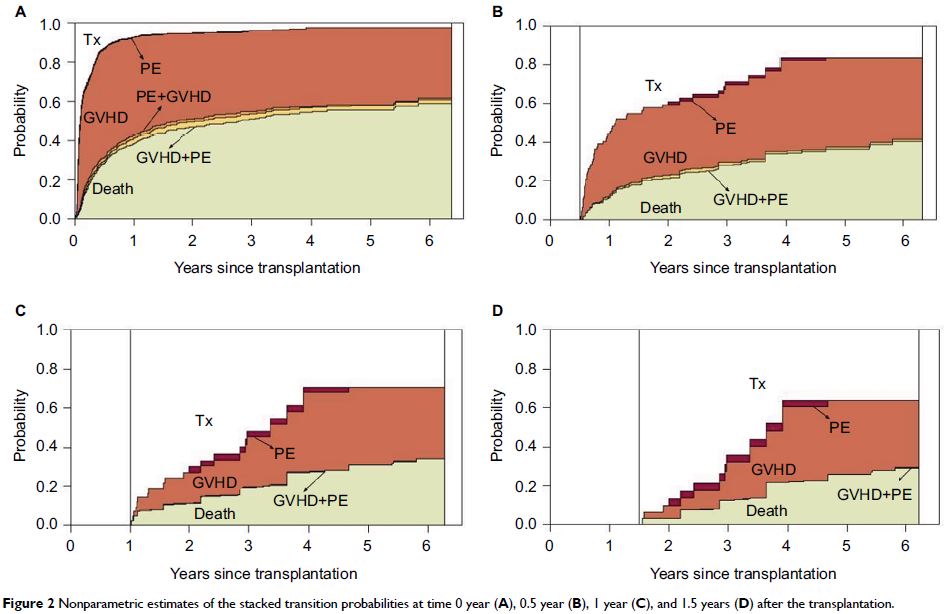9 0 6 7 6
论文已发表
注册即可获取德孚的最新动态
IF 收录期刊
- 2.6 Breast Cancer (Dove Med Press)
- 3.9 Clin Epidemiol
- 3.3 Cancer Manag Res
- 3.9 Infect Drug Resist
- 3.6 Clin Interv Aging
- 4.8 Drug Des Dev Ther
- 2.8 Int J Chronic Obstr
- 8.0 Int J Nanomed
- 2.3 Int J Women's Health
- 3.2 Neuropsych Dis Treat
- 4.0 OncoTargets Ther
- 2.2 Patient Prefer Adher
- 2.8 Ther Clin Risk Manag
- 2.7 J Pain Res
- 3.3 Diabet Metab Synd Ob
- 4.3 Psychol Res Behav Ma
- 3.4 Nat Sci Sleep
- 1.9 Pharmgenomics Pers Med
- 3.5 Risk Manag Healthc Policy
- 4.5 J Inflamm Res
- 2.3 Int J Gen Med
- 4.1 J Hepatocell Carcinoma
- 3.2 J Asthma Allergy
- 2.3 Clin Cosmet Investig Dermatol
- 3.3 J Multidiscip Healthc

Multistate models on pleural effusion after allogeneic hematopoietic stem cell transplantation
Authors Lee J, Modi D, Jang H, Uberti JP, Kim S
Received 22 October 2016
Accepted for publication 4 February 2017
Published 15 April 2017 Volume 2017:7 Pages 15—26
DOI https://doi.org/10.2147/OAMS.S125465
Checked for plagiarism Yes
Review by Single-blind
Peer reviewers approved by Dr Amy Norman
Peer reviewer comments 3
Editor who approved publication: Dr Dongfeng Wu
Abstract: A multistate model is more complicated than competing risk models and is
composed of a finite number of states and transitions between states. Unlike
competing risk models, this model has the ability to assess the effect of
occurrence order of time-to-event data. Pleural effusion (PE) is a severe
complication that often occurs after allogeneic hematopoietic stem cell
transplantation (HSCT). Many patients develop PE during the first 100 days
after allogeneic HSCT, and graft-versus-host disease (GVHD) occurs either
before or after the development of PE, implying that the occurrence order of PE
and GVHD (i.e., PE after GVHD vs. GVHD after PE) would influence on the
incidence, risk factors, and mortality of PE. One can use either Cox
proportional models or competing risk models to evaluate these values, but
neither method is able to incorporate the occurrence order of incidence into
the model. To resolve this difficulty, we developed a multistate model
describing several possible events and event-related dependencies and applied
to a retrospective study of 606 patients, including eight covariates.
Keywords: Cox proportional model, hematopoietic
stem cell transplantation, multistate model, pleural effusion, survival
analysis
